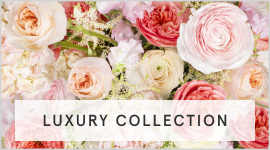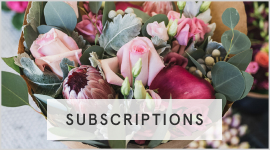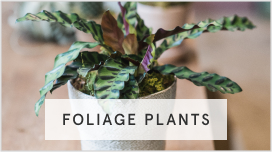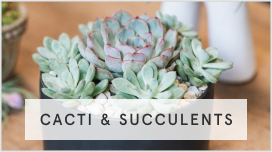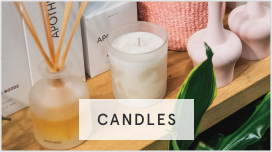How to Properly Grow Edible Flowers in Your Backyard Garden

How to Properly Grow Edible Flowers in Your Backyard Garden
Gardens are virtual respites from the outside world – alleviating stress and bringing joy to life when it’s needed most. You can thank the beautiful blossoms, rich colors, and heady fragrances for that significant benefit. Another advantage that many don’t think much about when planning their gardens is the sheer nourishment they provide.
Edible flowers open up an entirely new world of possibilities to gardeners who seek something new and interesting to brighten up their outdoor space. Not only are they easy on the eyes, but they’re also delicious. They’re easy to enjoy in a variety of ways: toss them on salads for an interesting garnish, flavor a bowl of hot pasta or soup, dress up a cocktail, or give dessert an attractive finishing touch.
You don’t need to be a master gardener to plant edible flowers, either. Centuries of experience cultivating and nurturing them has yielded a lifetime’s worth of secrets that everyone, from newbie to beginner, can use to their advantage. The same chamomile that you enjoy in your tea and the rose petals you find in Indian beverages can be found in your own backyard if you so desire.
Why Planting Edible Flowers is Beneficial
At its core, gardening can bring about a sense of peace. You’re likely to feel calm as you spend time working under the watchful eye of the sun. That warmth alone can help you feel better, as can routine exposure to beneficial vitamin D. As your mood lifts, so does your sense of accomplishment as you witness the fruits of your labor come to life. Over time, your flowers bloom and your garden beds flourish. It’s both humbling and inspiring to watch.
Yet there’s something even more special about growing flowers that you can eat. While the others can serve as beautiful décor for the home or offer an easy way to boost your curb appeal, there’s a difference when you can consume the result of all of your hard work. Cultivating edible flowers is a rich and rewarding experience because it yields colorful, flavorful, and exciting accents that will quickly shake up your meals.
You don’t necessarily have to be a dab hand in the kitchen to make good use of them, either. Garnishing a salad takes no effort at all, nor does whipping up a quick cocktail using a few key ingredients. Most of the time, you’ll only require the petals to breathe new life into your dishes and beverages, while you’ll dispose of the pistils, sepals, and stamens.
Which Edible Flowers to Grow
If you’re convinced of the power of the edible garden movement, keep in mind that some varieties are especially easy to grow—and delicious to consume. There are many options, of course, but some are especially worthy because they’re easy to grow. That can be a relief if you’re new to gardening entirely, or if you’ve never nurtured edible flowers before and want to ease into the process slowly. Try these flowers to give your garden a boost in every sense.
Calendula
The beauty of the calendula is unsurpassed. Like a little daisy, these annuals brim with vibrant color. Their petals are safe to consume, so all you need to do is pull them from the flower heads before adding them to your preparations. Their flavor is decidedly savory or spicy depending on the type of calendula that you grow. Some have a more peppery undertone, while others are considerably bitter. That’s the kind of flavorful versatility you want, especially if you love to be creative in the kitchen. Use it to add a kick to your suit or a contrast to a sweet salad. Try it on a baked potato or even in a pot of homemade butter for an interesting twist.
Chrysanthemum
It may make a wonderful gift for Mother’s Day, but you might be surprised to learn that the humble chrysanthemum is also a tasty addition to your food. Keep in mind you’ll need to grow the perennial yourself since store-bought varieties are usually treated. When you plant from seed, you can enjoy its earthy, herbal, and lightly grassy flavor on anything from a soup to a salad. You can even add a thin layer to a hearty sandwich if you want to incorporate something surprising into the mix.
Lavender
No one can argue with the sheer beauty of lavender. In all its purple glory, it brings beauty and style to your garden—along with a glorious fragrance. Lavender is customarily sweet, with floral undertones and a slightly herbal note that lends them a wonderfully earthy quality. You can use this herb in many ways, and you’re only limited by your imagination. Why not use it in a dessert recipe, such as pudding or cheesecake? Try concocting lavender tea with honey in the comfort of your home. It’s also a lovely addition to a cake frosting or marinade for chicken or ham.
Anise Hyssop
The perennial anise hyssop is wonderfully unique, making it a welcome addition to any kitchen. It boasts a medley of minty, lemony, and licorice flavors, yielding a flavor that is simultaneously sharp and sweet. It’s a thoughtful addition to a salad that could benefit from a little kick, but it works equally well as a topping in a cocktail or an iced tea. You can even sprinkle it on ice cream for some visual interest.
Squash Blossom
You’ll often find squash blossoms incorporated into Italian dishes. They derive from the squash plant’s flowers, adding an interesting and somewhat complex flavor to a variety of foods. They’re relatively mild, with a squashy undertone, but you can do so much with them that it’s almost impossible to remember they were once flowers. Bake them, deep fry them, or stuff them: that’s the kind of versatility that changes your creativity in the kitchen and yields a whole variety of unexpected dishes.
Other Varieties
That’s just a sampling of flowers you can grow in your garden for consumption. There are many, many other options, including chamomile, marigolds, fennel, chives, sunflowers, hibiscus, daylilies, borage, and dandelions.
How to Grow Your Edible Garden
Once you decide to grow an edible garden, you’ll need to follow a few basic steps to ensure that everything you grow receives the sunlight, oxygen, moisture, and nutrients that it needs to thrive.
Construct a Flower Bed
Unless you already have a dedicated area in mind, it’s often best to construct a separate, raised flower bed that’s devoted solely to your edible flowers. Make sure to select flowers that are suitable for your environment and planting zone, as those features can affect growth. Bear in mind that the average flower requires at least six hours of exposure to sunlight daily, so this should be a priority.
If constructing a raised garden box is not possible, an alternative is to use planters to grow your flowers instead. The advantage here is that you can place them in select areas where the flowers are most likely to thrive, and you can decorate areas like your porch and deck to lend them a little focal point at the same time. Over time, you might consider constructing a small box made with wood or bricks to produce a dedicated edible flower garden.
Create the Right Climate
Your edible plants can only thrive if you give them the care and attention they require. Always check your flowers’ seed packets to ensure that they’re suitable for your planting hardiness zone. Water them regularly and never use any type of harsh chemical additives. If any pests are present, remove them manually to prevent them from overtaking the flowers and ruining the fruits of your labor.
Check pH levels regularly to ensure that the environment is right for them to grow. Finally, insert a fingertip into the soil about an inch deep. If it feels dry, then it’s time to water to prevent your flowers from dehydrating. Note that some edible flowers should be picked right away—that is, precisely when they bloom—while others might be fine flourishing for a while until you’re ready to use them. When the soil is properly prepared, you can be certain that your hard work will pay off.
Exact Steps to Take
What you do in the beginning will dramatically affect how well your edible flowers perform over time. Place about eight inches of soil in the planting area. You can add some compost, too, which will encourage the soil to retain its nutrients and hold onto moisture more effectively. That supports healthier plant growth over time. Line the bed with a cloth that’s designed to block weeds from sprouting, as they could otherwise rob the edible flowers of the vital nutrients that they require to thrive.
Keep the right tools and equipment on hand, too. You can never have too many essentials, but at a bare minimum keep a pair of protective gardening gloves handy. You’ll also need a watering can or a hose, a gardening fork, a pair of pruning shears, and a trowel. With these basics in your collection, you can be confident that you’ll have just what you need to nurture and nourish your edible garden to perfection.



